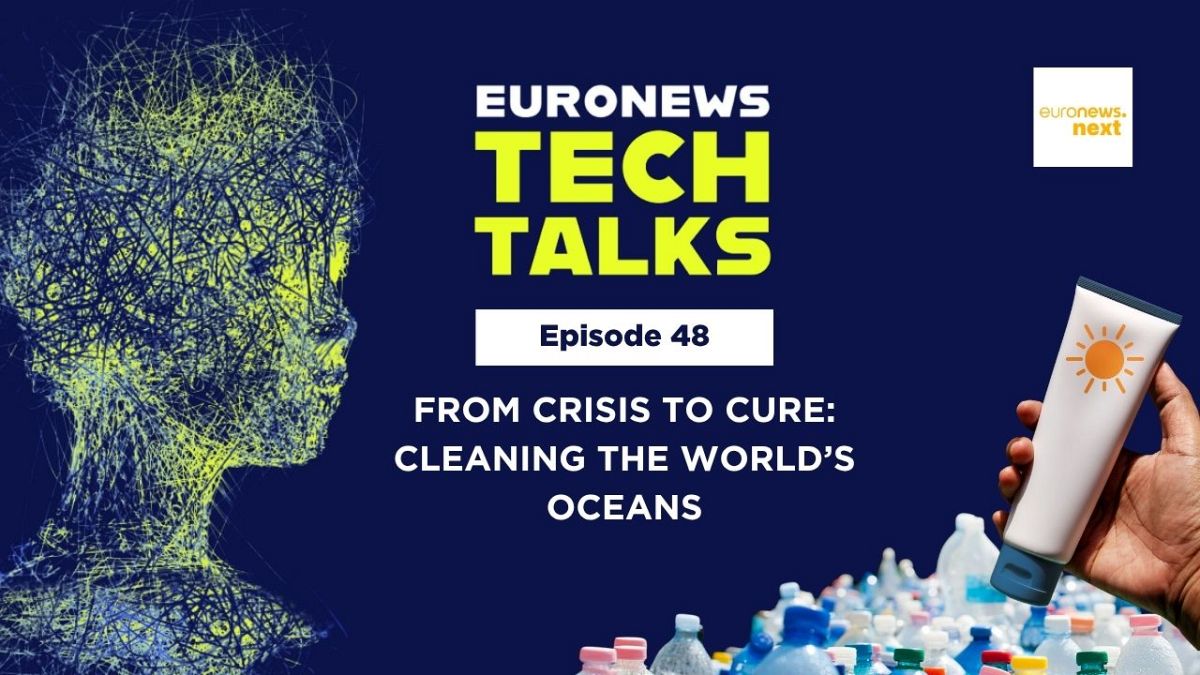On March 18, 1967, the supertanker SS Torrey Canyon struck a reef off the coast of Cornwall, United Kingdom, spilling 100,000 tonnes of crude oil into the English Channel.
Beaches in southern England, the French region of Brittany, and Guernsey in the Channel Islands were submerged in thick sludge.
More than 15,000 seabirds were killed, and the spill caused innumerable long-term damages to the marine environment.
The Torrey Canyon disaster was the first major oil spill in European waters. It marked a turning point in the way people interacted with oceans, revealing how vulnerable marine ecosystems are to human-induced threats.
To mark World Oceans Day on June 8, Euronews Tech Talks talked to two ocean experts to better comprehend the state of our oceans and the high and low-tech innovations that can help protect them.
Plastic Odyssey: The vessel on a mission
Over the past four decades, global plastic production has more than quadrupled, yet recycling has failed to keep pace, with rates remaining below 10 per cent.
Simon Bernard is the CEO and co-founder of Plastic Odyssey, a project dedicated to tackling ocean plastic pollution.
Bernard and a group of researchers embarked on a tour around the world aboard a research vessel to explore the best solutions for reducing plastic pollution.
“The idea of a research vessel is to be a scientific platform to study, do research, and development… The vessel acts as a laboratory, so for example, the aft is dedicated to recycling with various machines used to recycle plastic, test different solutions and technologies, and train local entrepreneurs,” Bernard explained to Euronews.
Plastic Odyssey has been sailing for two and a half years. During the journey, the crew stops for three weeks in locations affected by plastic pollution, meets the locals, institutions, and entrepreneurs to learn about their solutions, and helps support them.
“That’s quite shocking to realise that there is no pristine environment anymore, because plastic pollution has impacted all the places,” said Bernard.
Throughout the Plastic Odyssey’s journey, Bernard has met many people tackling plastic pollution and has been impressed by the cleverness of the simplest solutions.
“We’ve visited maybe 150 factories and initiatives, and what’s most interesting to us is the ingenuity and the use of low-tech solutions,” he said.
“We met a guy in Lebanon who made the equivalent of a food delivery app but for waste connection… and I’m thinking about Silvio in Colombia who was building houses out of plastic waste,” Bernard said.
Invisible threats to marine environments
While plastic pollution is a visible threat to marine ecosystems, oceans are also damaged by hazards that are much harder to detect, like chemical pollutants.
Researcher Anneliese Hodge from the University of Plymouth is studying these complex pollutants, and one of her most recent studies focuses on sunscreen.
The most harmful components of sunscreen are its UV filters designed to block, absorb, or reflect the sun’s ultraviolet rays.
“A recent estimation has suggested that approximately 10 million tonnes of UV filters are produced annually for the global market, of which an estimated 6,000 to 14,000 tonnes are released into coral reef zones alone annually,” Hodge told Euronews. “So this is quite a widespread issue,” she continued.
Hodge explained that UV filters in sunscreen can affect marine ecosystems at a molecular, cellular, individual, and community level. For instance, sunscreen can damage the DNA of marine organisms and cause coral bleaching.
Despite the need for further research into this topic, Hodge highlighted several potential solutions to reduce the threats sunscreen poses to marine environments.
Among them is the encapsulation of UV filters in biodegradable capsules that activate only upon contact with the skin.
In addition, Hodge cited the possibility of reducing UV filters and instead using Sun Protection Factor (SPF) boosters, specialised ingredients that could replace UV filters.
She also pointed to the introduction of some regulations to make corporations reduce the UV filters or ban the use of certain products.

